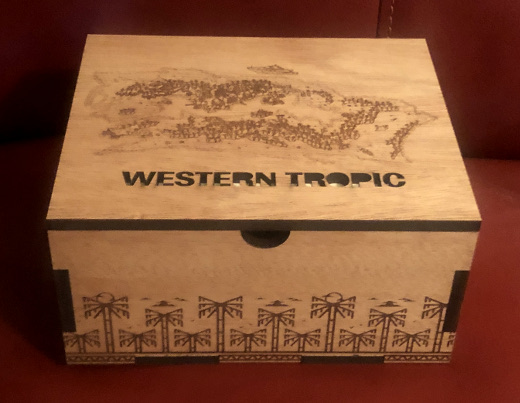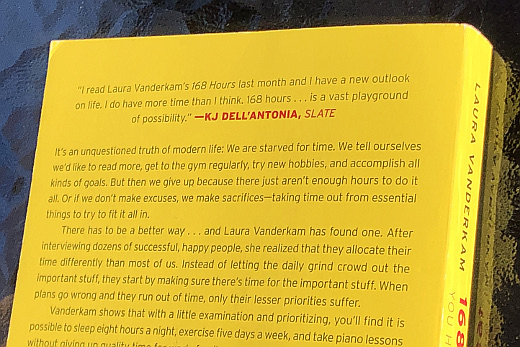Learning To Code In the Early 1980s
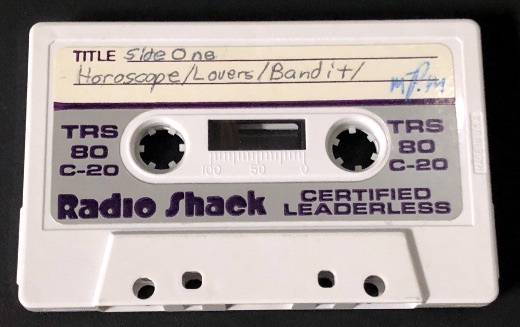
With all of the focus and attention these days on teaching kids about STEM (science, technology, engineering and math), it has triggered me in a positive way to recall when I myself learned how to write computer code back in the early 1980’s.
Now before you rush to judgement and say there is no comparison of the world today in 2020 to nearly 40 years ago, I’ll somewhat agree. The technology itself today is vastly different now than from then, however there are similarities in how I got started with computers and how my interest progressed.
Where It Began
This flashback is truly a journey, back in time and over many miles from where I am now. My junior high school in Massachusetts was the scene. One day in my math class, instead of getting to use basic-function calculators that were locked in a wooden case, 3 carts were wheeled in to the classroom with a Commodore PET computer on each of them. Little did I know how this would be the catalyst of my passion for technology.
Be aware the mobile smartphone you may be reading this post on has orders of magnitudes more power, memory and storage that all 3 of those PET computers combined. Let alone the fact the screens were monochrome (aka black and white) as compared to the rich colors in the palm of your hand. That being said, those computers with their cassette tape drives (we had no floppy disk drives then) had much more power than the calculators we usually got to use and we didn’t even realize the powerful tool that was put in front of us.
Tool, or should I say toy? All we usually did in math class with the computers was play games. Sure, the intent of these computers in the classroom was to expose us to the early-stages of the concept of personal computers, from typing commands to loading software from the cassette tape drive and running said software. Despite these “skills” we were learning, it wasn’t enough for me. I didn’t want to just play games as my classmates were content with, I wanted to write games!
Geek Quest
If I only had a picture of the face my teacher made when I asked her how to write software to program the PET computer. After her initial shock, she admitted she didn’t know, but there was another math teacher, Mr. Palmer, who she thought could help me. I didn’t have him for a teacher before and didn’t know him at all, and back then it was unusual to get such guidance or training from another teacher. But I wanted to learn how to write code, so I was connected with him by my teacher.
This unassuming introduction was a pivotal point in my life. And in middle school no less! Mr. Palmer proceeded to tell me the games and programs I was using on the PET were written in the BASIC programming language. He lent me a book on learning BASIC that he had, gave me some pointers and suggested I start reading this, and he would help me with any questions I had. He also said there were other books on BASIC and that other computers ran programs written in BASIC too, so I could look into those as well. Armed with this knowledge and direction, I was off and was writing my first BASIC programs by literally writing them with a pencil and paper. I did this at home or in study halls, and then when I got time in front of the computer, I would type them into the computer and save them to a cassette. The photo above in this post is of one of the cassettes I recently rediscovered from those days.
This geek quest was a solo one, however, as I was the only kid in class who wanted to write code. When it came time to use the computers in math class, of the 3 computers I would always get one to myself. Some kids complained, but overall they didn’t seem to care as long as they got a chance to play games in class.
What’s Your Sign?
My first programs were short ones that didn’t do a whole lot – clear the screen, scroll text, basic math – and I wanted to do more. The idea came from somewhere (sorry, I don’t recall all of the details of this time!) to write a program that would tell your horoscope. So I came up with a simple premise, you type in your astrological sign, spelling it exactly (even Sagittarius), and a preset silly horoscope for you would be displayed on the screen. If you know anything about programming languages, it was a giant If-Then-Else statement. But it was my If-Then-Else statement.
After some toil and testing, the program was done. I showed it to Mr. Palmer and he liked it, so I then let my math classmates give it a try. For as simple as it was, some of them were actually impressed that I was able to create such a program. And with this, I wrote the first of many, many computer programs I would over the next decades.
To Infinite Loop And Beyond
From this humble beginning, I learned more “advanced” features of the BASIC language. As I moved into high school I had access to the school’s mainframe, a Digital PDP-11, as well as eventually my own computer at home, a TRS-80 Model III. With these 2 platforms my learning took off, exploring more complex aspects of programming, the hardware of the computers and my first foray into going “online” with dial-up computer bulletin boards. Along the way I also had my first computer consulting gig in high school. Next came college and a degree in Computer Information Systems, and the career I have talked about much here in this blog.
Deconstructing Learning to Code
In the beginning of working with computers I had a mentor who guided and encouraged me – thank you Mr. Palmer, wherever you are! Over the years and many miles from the junior high school, it’s nice to reminisce about those exciting early days of computing and the enthusiasm I have had for technology. This guidance was important for me then, just as it is critical for young people today to also be inspired in a career in high technology.
This is from The Hot Iron, a journal on business and technology by Mike Maddaloni.
Did you enjoy this? Subscribe to The Hot Iron by RSS/XML feed or Read by Email
Build • Strategize • Technology • (0) Comments • PermalinkWhat I Learned This Week For May 29 2020
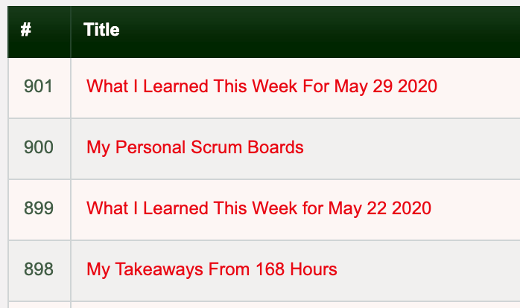
It was a short and somewhat quiet week, at least on the work front.
- Among all the bills passed and rules changed in Washington DC regarding the pandemic, a change to Flexible Spending Account (FSA) allocations was made. If you’re unfamiliar, an FSA allows you to pay for medical and related expenses with pre-tax deductions from your paycheck. You can reduce the amount you originally signed up for, and if you haven’t heard from your employer’s HR department then you should contact them. That, or spend your larger-than-expected balance at the end of the year on Band-Aids.
- Two of the greatest summer swim meets are now canceled. With the City of Appleton, Wisconsin FINALLY (emphasis intentional) announcing if it’s going to open or close its 2 great municipal pools – yep, they will be closed – the 8th Annual Summer Classic in June and the 22nd Annual Bird Bath Invitational in July, a meet which attracts over 1,000 athletes from around the state and region are now canceled. Where the fact that they wouldn’t happened was inevitable, the reasons why decisions were prolonged baffle me. And others.
- Not to dwell on agitation on what is preoccupying most of the world right now, but this post on the Brand New blog has the tone of something I have written in my head many times in the last few months.
- I get daily Google Alerts on my last name, which likely everyone reading this does too, right? A hit on this unique product on Amazon came up and made me wonder if it’s an automated product customization feature of the retail giant?
- You need to be 18 to buy Super Glue in Wisconsin, and not a malfunction with the self-checkout register that was prompting a store clerk to come over to approve the purchase. I didn’t inquire further why the rule or law was in place, but now I have something to look into if I am really bored.
- This article brought the inner-child geek in me – it is about how you can access the software and data on an old computer cassette using a vintage computer emulator on a modern computer. Apologies if I lost anyone there, but as I have several old tapes from decades ago – if they haven’t demagnetized, they’ll be fun to explore!
- This is my 900th post here on The Hot Iron. It shows as post 901 as the first post I made to this blog 13+ years ago was likely a test and deleted. It’s a nice milestone, and now I can’t wait to get into quadruple digits.
Happy Anniversary Sweetheart!
This is from The Hot Iron, a journal on business and technology by Mike Maddaloni.
Did you enjoy this? Subscribe to The Hot Iron by RSS/XML feed or Read by Email
What I Learned • (2) Comments • PermalinkMy Personal Scrum Boards
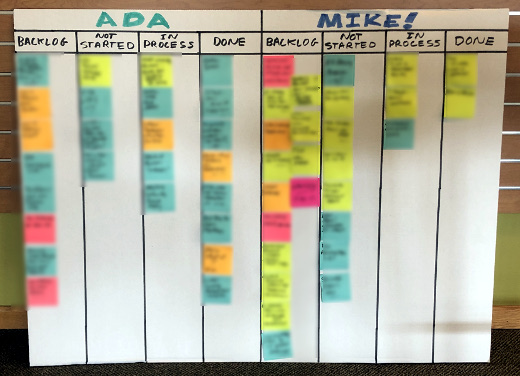
Shortly after completing my Scrum training and becoming a Certified ScrumMaster, it was clear to me that in order to be successful at the Agile framework, I have to be an active practitioner. Where I am planning that in my job with my director who is a Scrum Master himself, I sought other ways to use it.
Where I am applying Scrum right away is in my own work and in my personal life. The latter was reinforced when I read Scrum: The Art of Doing Twice the Work in Half the Time by Jeff Sutherland as he talks about how to use Scrum well beyond software development. This led me to creating personal Scrum Boards for both. The picture accompanying this post is of my Scrum Boards, with my work one to the left and my personal one to the right.
Elements of a Scrum Board
A Scrum Board is a tool for tracking progress and providing visibility on a project. There is single definition of how one is structured or organized, as it should ideally fit your needs, whether individually or for your Scrum Team. The basic components of it should include the following, and I also indicate how I have adapted these components for my needs.
Backlog – A Backlog is the work to be done. Larger, higher-level items are called Epics, and smaller, shorter, more specific items are called User Stories.
In both of my Scrum Boards the Backlog is the first column – yes, I purposely blurred out the tasks in it, both for confidentiality and to not bore you, my dear reader, of the mundane minutiae of my life. Most all of these are User Stories. Each is written on a Post-It note so they can be easily moved around.
Not Started – This is actually an optional component, and is also referred to as a Sprint Backlog. All work done in Scrum is done in Sprints, a defined period of time such as 2 or 4 weeks. The items in these columns are what I plan to work on during the week. As it is not required, I simply could have all of my Backlog prioritized in one column.
For myself, I have 1-week Sprints. At the start of the week, I review – or Refine – the Backlog and select the work to be done in the Sprint. Refinement also includes readdressing the priorities of Epics and User Stories, which can vary from week to week, or in this case Sprint to Sprint. Once this process is completed, I move the Post-Its to the appropriate column.
In Process – When I start an Epic or User Story, I move it to this column from Not Started, indicating what I am actively working on.
It’s not uncommon for me to have multiple items in process as I am often awaiting something else to be completed to proceed. It is not my intent to have more things in process than I can manage. The goal here is to use this to get more work done by breaking tasks into smaller components.
Done – Once a User Story or Epic has been completed, it gets moved to this column, and a small celebration takes place in my mind.
The accompanying photo was taken towards the end of last week, when I had several items done, and since then I completed more. At the end of the week I clear all Done items, and hold a review, or Retrospective, to go over the week, realities in my schedule, setting up the next Sprint the following week.
More To It Beyond Myself
In using Sprint Boards for personal work, I am adapting it from a standard Scrum flow. I am performing the roles of a Scrum Team myself – the Scrum Master, Product Owner and Development Team. I also am not doing a Sprint Review per se, a process of demonstrating the work of a sprint for approval, for as I move an item to Done I am reviewing it at that time. Additionally, my Retrospective and Refinement processes are not as involved.
A Scrum Board is typically displayed prominently in an office or managed using an online tool that all have access to. Mine is on a project board that kids use at school for presentations, as its tri-fold format allows me to easily transport it through my house or even to my co-working space. During the workday it is open and visible and at night it’s folded away.
There are other components that can be added to a Scrum Board. This article from Scrum Inc. on Scrum Boards expands more on them, and how other elements of Scrum interface with them.
You Can Do It
Have I convinced you to have your own Scrum Board? I welcome your thoughts and how you manage your own in the comments to this post.
Deconstructing Scrum Boards
A single, visible place for all elements of your project are what Scrum Boards are for and are a key component to the Scrum framework. Though my own Scrum Boards are modified in some form to use for myself, even in this form it is good practice to follow as my overall work is transformed towards Agile.
This is from The Hot Iron, a journal on business and technology by Mike Maddaloni.
Did you enjoy this? Subscribe to The Hot Iron by RSS/XML feed or Read by Email
Business • Agile / Scrum • Thrive • (4) Comments • PermalinkWhat I Learned This Week for May 22 2020
In addition to learning that when someone says they have done all they can to solve a problem, and yet when pressed they come up with other things…
- Based on a recommendation, I watched the first 2 episodes of Upload on Amazon Prime and am stopping there. I am not sure if it was that I don’t think we’d have that kind of technology in 13 years or that I just didn’t like the characters. I now return to binge-watching Star Trek: Voyager.
- I am having a hard time with LinkedIn Messaging, where you can send messages to people thru the business social media platform. In some cases I get alerts when someone sends me a message, and other times I don’t. As a result, I have missed messages completely and have replied too late. As people tend to send more messages that way instead of email, something will have to give.
- Congrats to my friend and everyone involved with the launch of BostonExO, a consultancy centered around the ExO framework, which is short for exponential organizations.
- Apple has a trade-in program that has apparently been around for a while. Remember, this post is about what I learned.
- World HeadQuarters, a co-working space in Appleton, Wisconsin, is reopening on June 1. In the meantime, members with 24/7 access like myself can go back now. I have already taken a couple of meetings from there, and it’s good to be back.
- Western Tropic, an artisan card/board game, arrived in the mail this week. It was created by my friend Len Kendall who launched it with a sell-out Kickstarter campaign. The game is in a limited-edition mahogany box, and I can’t wait to open it all up and play it with the family. It looks – and smells – great!
Bye Felicia!
This is from The Hot Iron, a journal on business and technology by Mike Maddaloni.
Did you enjoy this? Subscribe to The Hot Iron by RSS/XML feed or Read by Email
What I Learned • (0) Comments • PermalinkMy Takeaways From 168 Hours
“There’s not enough time in a day.” It’s a phrase I hear a lot, and one I say myself. A lot. Often the phrase is said at the end of the day, following many things done but with still many more to do. There’s 24 hours in a day, yet people still have a hard time getting done all that we want.
What if we look at it differently, from the point of view of an entire week rather than just a day? Where there’s only 24 hours in one day, there’s 168 hours in a 7-day week. Does it seem more possible to get done with more time? This is the idea behind the book 168 Hours: You Have More Time Than You Think by Laura Vanderkam.
168 Hours is more than just another time management book. It explores the possibilities what you can do when you look at time and tasks differently, what you should do as well as what you could have others do for you. As I read through the advice and stories, a few takeaways came to mind.
Time logging is hard when we don’t block time – I have done time logging before, namely when consulting and tracking my time to bill to clients. I also used the method in the book of tracking all tasks every hour for a week, literally 24/7. Where it gets difficult is when you do multiple things in a time period, say a half hour, and you are not focusing on one thing. Time blocking is something I do as often as I can to dedicate a period of time to one task.
Working on 100 Dreams – So what do you want to do with your new-found time? After realizing you may actually have more time than you thought, the author suggests creating a list of 100 dreams of things you would like to do in your lifetime. This is in itself is an intriguing and sole-searching experience, and is something I am still working on. Vanderkam says that not all of the dreams have to be big, but why not?
15 minute tasks – What if all of the sudden you had 15 minutes to spare without interruption, what would you do? When we think about our to-do’s, we often just see the larger end result of the effort, and not that it is a collection of smaller tasks. This is the idea behind Scrum and how I have been looking at both my work and personal projects since I got my Scrum certification, by breaking a project into smaller tasks and executing them in priority order working towards that end goal.
Clutter and horizontal surfaces – Apparently experts know the way for you to feel your space – whether home or office or wherever – is clean and it’s with having clear horizontal spaces. So if the kitchen floor isn’t spic and span but the countertops are clear of cutting boards and dishes, then you feel like you have a clean kitchen. And I have to admit, I agree.
168 Hours uses a lot of personal stories and historical contexts in discussing time usage. Where using such a chart of track 168 hours may be daunting, it’s a good exercise. After going through this myself I recommend it to anyone who is overwhelmed or simply wants to analyze where the time goes to consider it. Perhaps when confined at home isn’t the best time to track your time, but it’s a good time to read the book. Speaking of which, I will be sending this off to a colleague who commented they thought the book was interesting to them when I had posted about it initially on LinkedIn.
This is from The Hot Iron, a journal on business and technology by Mike Maddaloni.
Did you enjoy this? Subscribe to The Hot Iron by RSS/XML feed or Read by Email
Book Take-Aways • (0) Comments • Permalink
